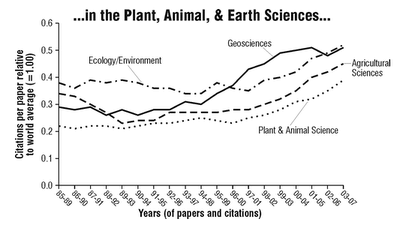
The Himalayas are categorized as having local and shallow aquifers, the Indus-Gangetic plains belong to one homogeneous groundwater basin and the southern peninsular region is a complex hydrogeological province. These are somewhat misleading categories in that they are not mutually exclusive. For example local and shallow aquifers are found all over India. And the Himalayas have plenty of regions of complex hydrogeological structures. But combined with recharge potential the map gives on a broad scale the likely patterns of aquifer yield across the country.
Looking at Maharashtra I could not help noticing that areas of complex hydrogeological structure and medium to low recharge potential spatially coincided with the vast majority of cases of farmer suicides in the state. This is the region north of Hyderabad and east north east of Bombay. Over the last 6-8 years more than 2000 farmers have committed suicide. The immediate explanation for most of these cases is indebtedness. Farmers borrow money to meet high farming input costs or for other personal reasons and fall into a debt trap if crops fail or give a low yield. The Maharashtra government compiled the results of several studies of farmer suicides and identified conditions that made farmers in these regions particularly vulnerable. These were:
Disruption in regular rainfall cycle since 2001. Long dry spells, deficient monsoon.
Single crop a year, and Cotton the dominant crop. About 70% of farmers who committed suicide had planted cotton.
93 percent of land rain fed. 98 percent of the farmers who committed suicide had no irrigation.
Yield limited by rain, but regular rise in cost of input lowered margin of profit.
Volatility in market price further lowered return.
Commitment to money lender did not leave anything with the farmer.
Farmers are heavily dependent on monsoon rains to water crops. But how does complex hydrogeology figure in this? This agricultural region sits on top of the Deccan basalts. Aquifers are local, shallow, deep, all sorts, and show lateral and vertical heterogeneity in their water storage capacity and transmissivity. I have seen this in the field. The situation can change from high yield to bone dry over a distance of tens of meters. So a farmer with a small landholding of a hectare or so - and there are plenty of them in this region- may just have the bad luck of farming on top of an unyielding basalt. He then has to rely entirely on the rains or get into a groundwater sharing agreement with a neighboring farmer who might have a yielding aquifer under his farm. But during times of water stress there is too little water to go around resulting in crop failure or low yields.
Another problem is that not enough attention has been paid to managing the available groundwater resource. Farmers use dug wells as a primary water extraction method but using the dug well to replenish the aquifer during times of good rain is not practiced widely. This has led to aquifer overdraft and a steady diminishing over the years of the groundwater resource. Not all cases of farmer suicide can be linked to water problems. Crops can get wiped out by pests, yields could have been low due to soil degradation, some instances where Bt Cotton seeds failed and then there are probably cases where despite decent yields farmers simply made irresponsible financial commitments. But the link of low yields to ready availability of water is real.
Tushaar Shah a groundwater expert with the International Water Management Institute has made a strong case that focusing on groundwater replenishment will go a long way in preventing crop failure and improving yields. He gives an example:
Over 86 million hectare of India’s rain-fed areas, mid-season or terminal droughts regularly take a toll on the kharif crop. At such times, using around 1000 cubic metres per hectare of water from wells just-in-time to water a wilting crop just once can raise crop yields by 30-230 percent over rain-fed yield levels.
Off course if the wells themselves are dry then there is no backup for failed rains. A Tata Institute of Social Sciences report on farmer suicides found that farmers had little or no groundwater available to them during times of rain failure. A combination of complex hydrogeology and poor management of groundwater resources has exerted a powerful influence on the lives and livelihoods of Maharashtra farmers.
Mr. Shah makes the following recommendation for complex hydrogeological terrains:
What hard-rock India needs is a new mindset of managing dug wells as dual-purpose structures, for taking out water when needed and putting water into the aquifers when the surplus is running off. Recharging aquifers needs to get the first charge on monsoon run off. Unfortunately, government planners give it the last priority.
Water available for recharge is estimated after allowing for the requirements of existing and planned surface reservoirs. This is absurd in a country where 70 percent of irrigated areas and 90 percent of drinking water needs are met from groundwater.
Is the government listening? The Prime Minister of India's special relief package for Maharashtra farmers wants to attack the problem on a broad front which includes tinkering with the economics of cotton farming, encouraging a diverse array of crops and reducing dependence on pesticides and fertilizers. But water underlies any successful agricultural strategy. In terms of water it lists irrigation development as the only long term solution to the water problems faced by farmers and doles almost 10 times more money to irrigation development than to watershed development. Irrigation development in the language of the government of India means canal irrigation (read mega infrastructure projects) and not local groundwater irrigation.
This, despite the revealing statistic that even though thousands of crores of Rupees have been spent on canals, they irrigate just about 15% of arable areas over the landmass of India and marginal farmers and farmers with small landholding benefit most not from canal networks but through groundwater irrigation.







